Suffolk / Kerrison Reformatory School for Boys, Thorndon, near Eye, Suffolk
Following a meeting at Stowmarket in November, 1855, fund-raising began to open a Reformatory School for Boys to serve the county of Suffolk. A leading figure on the committee formed to establish the institution was local land-owner and M.P., Sir Edward Kerrison, who purchased a house and sixteen acres of land for the purpose on Stoke Road at Thorndon, near Eye. On March 22, 1856, the premises were officially certified to accommodate up to 45 boys placed by the courts to be detained for up to five years.
Industrial training provided at the School was typical of that found in 'Farm Reformatories' and included farming, gardening, shoemaking and carpentry. From the outset, the establishment gained a good reputation with its official Inspector, the Rev. Sydney Turner. Its 'efficient and economical management' were commended and it was suggested that new Reformatory masters might be advantageously trained at Thorndon.
The School's first master and matron were Robert and Sarah Ann Gill, in what was to become something of a family business. In 1864, their son John began to help with the classroom instruction and by 1871, John and his sister Hannah were acting as assistant master and matron, with younger sister Selina also having become a teacher. By 1876, another son, Frederick, had been appointed as schoolmaster. Following the death of his father in 1882, Frederick, then schoolmaster at the Tiffield Reformatory in Northamptonshire, was appointed as superintendent at Thorndon alongside his mother as matron. By 1891, Frederick had married and his wife, Agnes, was appointed assistant matron, taking over as matron in 1899 after the death of Sarah Ann. Agnes and Frederick's son, Frank, became a school and general assistant in 1903. Frederick was still Kerrison's superintendent in 1920.
In 1869, another 45 acres were added to the school farm, extending its area to 59 acres. The School's industrial training now consisted solely of farm and garden work. The boys were also engaged from time to time by neighbouring farmers.
In 1872, Following criticism of the boys' classroom performance, a cottage originally intended for use as an infirmary was converted into an additional schoolroom. This appeared to be followed by an improvement in the boy's educational state which, in 1875, was described as 'very creditable'.
The School site is shown on the 1886 map below.
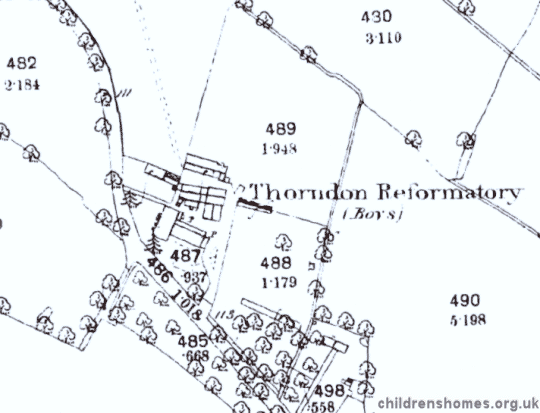
Suffolk Reformatory School for Boys site, Thorndon, c.1886.
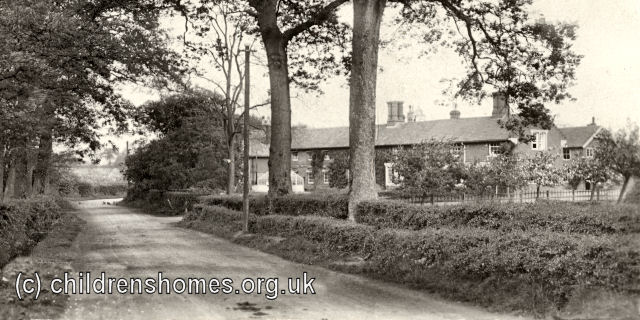
Kerrison Reformatory School for Boys from the south, Thorndon, c.1905. © Peter Higginbotham
Following Sir Edward Kerrison's death in 1886, the School was renamed the Kerrison Reformatory, though was also sometimes referred to as the Thorndon Reformatory. At around this time, some extensions to the buildings were being carried out, including considerable additions to the farm buildings and the sinking of an artesian well. The farmland was increased to 71 acres, with stock now including five horses, six cows, cattle and pigs. There was a large garden, with individual plots provided for each boy. In 1888, a shoemaking class was started and a drum and fife band established. By 1894, the School's laundry, bakehouse and physical drill were all reported as 'good'. The average number of inmates in that year was 82.
In 1899, the drum and fife band was converted into a brass and reed band and a bandmaster was appointed. The School now had an open-air swimming bath, and physical training included gymnastics, boxing, military drill with rifles, together with 'Morris tube shooting' at an open-air range.
The extensions to the main building created an enclosed yard or quadrangle. A clock was installed on the building in 1896.
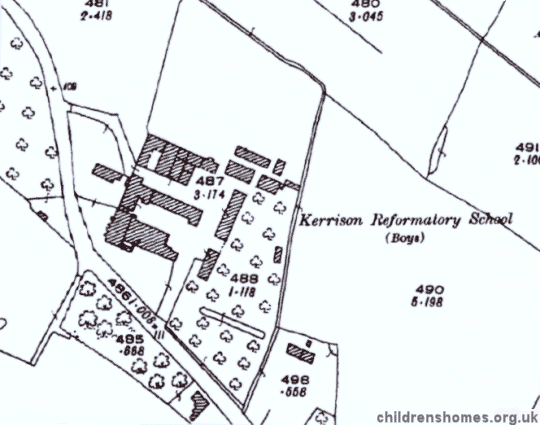
Kerrison Reformatory School for Boys site, Thorndon, c.1926.
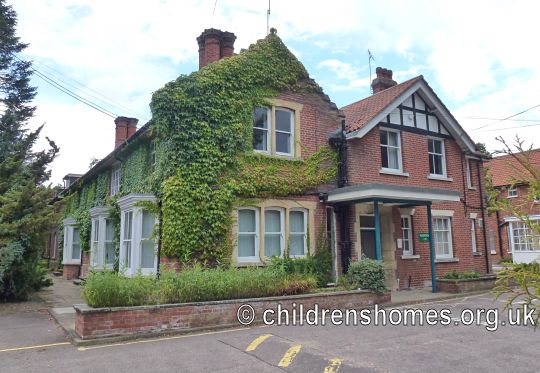
Former Kerrison Reformatory original main building from the south-east, Thorndon, 2013. © Peter Higginbotham
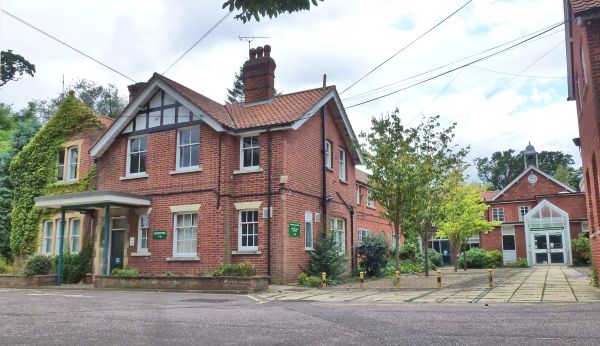
Former Kerrison Reformatory main building and quadrangle from the east, Thorndon, 2013. © Peter Higginbotham
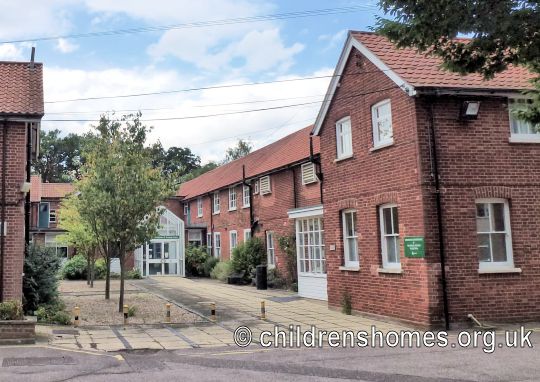
Former Kerrison Reformatory quadrangle from the south-east, Thorndon, 2013. © Peter Higginbotham
A detached classroom block at the west of the main building was opened in 1896.
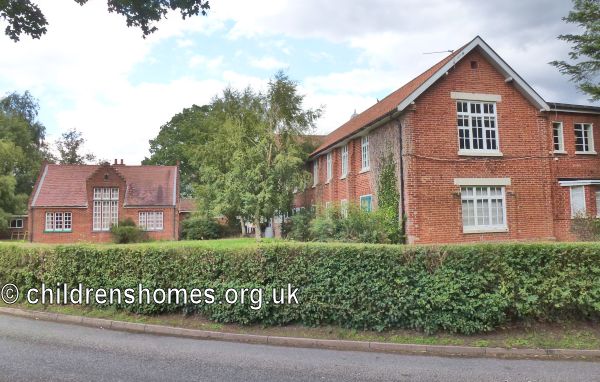
Former Kerrison Reformatory classroom and main block from the south, Thorndon, 2013. © Peter Higginbotham
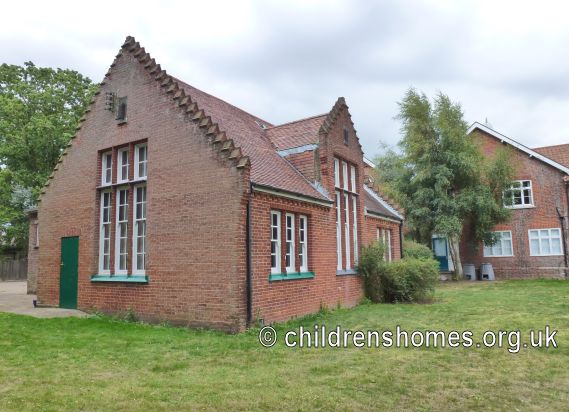
Former Kerrison Reformatory classroom block from the south-west, Thorndon, 2013. © Peter Higginbotham
On August 22nd, 1902, the various building works that had been undertaken at the School enabled its official capacity to be increased to 100. In the early 1900's technical drawing and wood-working were added to the training.
In 1916, it was reported that the School had contributed to the war effort by producing 7,990 leather covers (handstitched) for rifle-clips and 7,583 straps, and had leather-covered (handstitched) 260 Lewis machine gun rails.
In 1933, Kerrison became an Approved School, one of the new institutions introduced by the 1933 Children and Young Persons Act to replace the existing system of Reformatories and Industrial Schools. It accommodated up to 90 Senior Boys aged between their 15th and 17th birthdays at their time of admission. The industrial training at the Kerrison School now comprised farming, gardening, carpentry and baking. Additional facilities were added to the site and in 1940 its capacity was recertified as being for 100 boys.
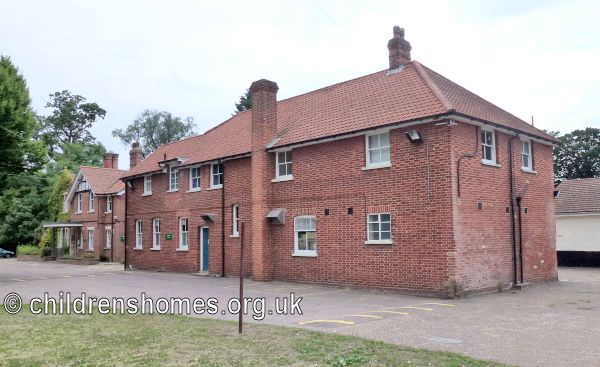
Former Kerrison School 1930s addition, Thorndon, 2013. © Peter Higginbotham
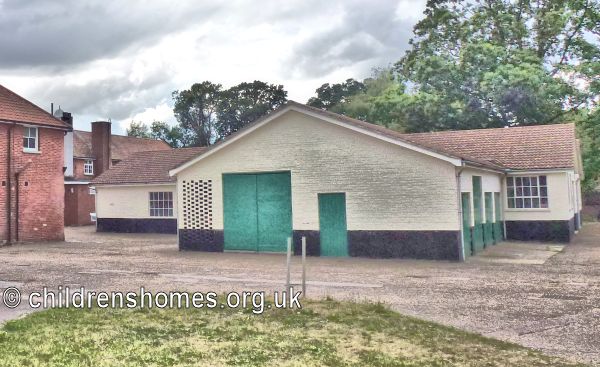
Former Kerrison School workshops, Thorndon, 2013. © Peter Higginbotham
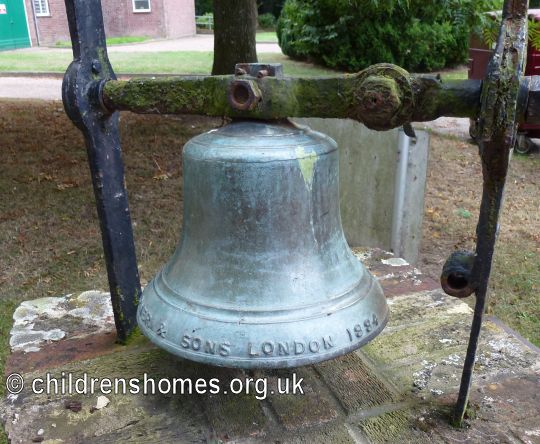
Former Kerrison School bell, Thorndon, 2013. © Peter Higginbotham
In 1973, the school became a Community Home with Education (CHE) under the control of East Suffolk County Council.
In more recent times, the site has been occupied by the Kerrison Conference and Training Centre.
Records
Note: many repositories impose a closure period of up to 100 years for records identifying individuals. Before travelling a long distance, always check that the records you want to consult will be available.
- Suffolk Archives, The Hold, 131 Fore Street, Ipswich, Suffolk IP4 1LR. Holdings (1855-1968) include Admission and discharge registers, Punishment records, Financial records, Medical logs, Photographs, School prospectus (1929) etc.
Bibliography
- Carpenter, Mary Reformatory Schools, for the Children of the Perishing and Dangerous Classes, and for Juvenile Offenders (1851, General Books; various reprints available)
- Carlebach, Julius Caring for Children in Trouble (1970, Routledge & Kegan Paul)
- Higginbotham, Peter Children's Homes: A History of Institutional Care for Britain's Young (2017, Pen & Sword)
- Abel Smith, Doroth Crouchfield: A History of the Herts Training School 1857-1982 (2008, Able Publishing)
- Garnett, Emmeline Juvenile offenders in Victorian Lancashire: W J Garnnett and the Bleasdale Reformatory (2008, Regional Heritage Centre, Lancaster University)
- Hicks, J.D. The Yorkshire Catholic Reformatory, Market Weighton (1996, East Yorkshire Local History Society)
- Slocombe, Ivor Wiltshire Reformatory for Boys, Warminster, 1856-1924 (2005, Hobnob Press)
- Duckworth, J.S. The Hardwicke Reformatory School, Gloucestershire (in Transactions of the Bristol and Gloucestershire Archaeological Society, 1995, Vol. 113, 151-165)
- Higginbotham, Peter Children's Homes: A History of Institutional Care for Britain's Young (2017, Pen & Sword)
- Hyland,Jim Yesterday's Answers: Yesterday's Answers: Development and Decline of Schools for Young Offenders (1993, Whiting and Birch)
- Millham, S, Bullock, R, and Cherrett, P After Grace — Teeth: a comparative study of the residential experience of boys in Approved Schools (1975, Chaucer Publishing)
Links
- Red Lodge Museum, Bristol — a former girls' reformatory.
Except where indicated, this page () © Peter Higginbotham. Contents may not be reproduced without permission.


